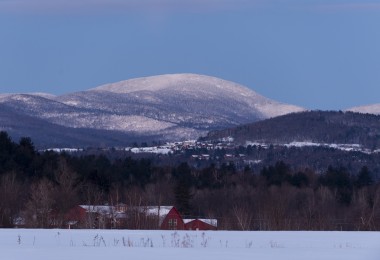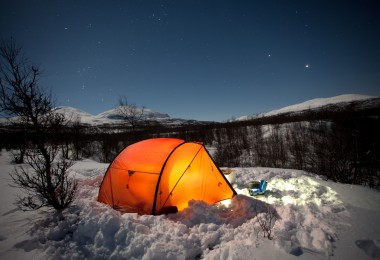On San Juan Island in Washington State, a walk along First Street in Friday Harbor will bring you to the Whale Museum. It’s far more than just a walk-thru, and although it’s a non-profit organization, it does charge for entry. The entry fee is mostly to help maintain the museum’s various programmes that successfully provide support to the multiple species of marine mammals scattered within the surrounding waters.
Several pods of orcas use the area’s inland waters as feeding grounds and have done quite successfully for thousands of years. It’s these feeding grounds and the orcas’ constant struggle for survival, which is the museum’s primary focus.
The building dates from 1892. In 1979, the museum became America’s first to dedicate itself to educating the public about orcas and their aquatic habitat. But the Whale Museum is much more than just another collection of exhibits.
Education, Interaction & Preservation
The museum’s watchwords are education, interaction, and preservation. It’s a great place to learn about these giants of the deep and their eco-system. Entry, by staircase or stairlift, brings you to the main exhibits on the first floor, with narratives.
The museum is spacious and well laid out and has attracted thousands of family groups over the years, eager to learn about these marine residents. The ground floor shows the skeleton and a full-sized scale replica of Sooke, a three-year-old female member of L Pod. The model itself is a sad reminder of the endangered Southern Resident Community.
Tours of the Whale Museum
Participation is very much to the fore, with opportunities to engage in absorbing activities for both children and adults. Lectures and museum tours are designed to increase general awareness of this most sociable of mammals. From entry to exit, the Whale Museum offers a compelling blend of the natural world through art, sculpture, and digital displays.
Its group tours are another great way of learning about the Pacific Northwest whale communities. Reserve these tours in advance, available with add-on programmes to enhance the experience. The group tours are open year-round, with reduced admission prices for non-profit organizations and schools.
Whale Museum Programmes
Among many other ways of getting involved is through the museum’s ‘Adopt an Orca’ programme. Included is the museum membership, and this is quite a unique chance to become a vital link in helping preserve the Southern Resident Community of whales for generations to come.
For those keen to increase their knowledge, the museum has run a marine naturalist training programme since 1994. It provides an intensive 6-day course focusing on the San Juan Islands’ natural history and their surrounding waters. With a sound mix of field trips and lectures, it is very much a ‘hands-on’ exercise. Tuition fees start from $425 for museum members. More information is available at info@whalemuseum.org
Children aged 6-11 years are well-catered for in the summer with the museum’s popular ‘Pod Nod’ pajama sleepover events. These are supervised annual events featuring movies, games, crafts, science projects, with breakfast included. ‘Pod Nod’ prices are reduced for museum members, participating in this educational event with great value.
Support The Whale Museum
As you would expect, the Whale Museum has a gift store. It offers a great selection of outdoor wear, educational material, local artwork, as well as books, DVDs, CDs, jewelry, and a unique collection of gifts. The store’s proceeds go a long way to help support the museum’s various marine programmes.
Becoming a member of the Whale Museum is another effective way of ensuring its longevity. It entitles you to free museum entry, discounts in the gift store, a biannual newsletter as well as advance notice of upcoming events.
Whales In Natural Habitat On San Juan Island
For the keen observer, San Juan Island offers excellent vantage points from which to see these giants of the deep. Just 20 min from Friday Harbor, Lime Kiln Point State Park, known as Whale Watch Park, is arguably one of the better known and possibly one of the best shore-based viewing points. Best viewing times are mid-May to mid-October, but you may see the whales year-round.
Search for whales from Whale Watch Point, a lookout just 300 yards from the parking lot. Additionally, visit the Whale Museum’s research lab in the Lime Kiln Lighthouse. This historic lighthouse has served as a beacon for ships since 1919.
Because the weather can change quickly, no matter the season, come prepared and don’t forget the camera. Above all, have patience; marine wildlife doesn’t have a fixed timetable. That said, it’s very much a case of once seen, never forgotten.
If up for a stroll, navigate the 1.5 miles (2.4 km) of trails just beyond the lighthouse. The area is beautiful year-round, and you may spot more than whales along the shoreline. In winter, the state park receives fewer visitors, and you may even see a few inches of snow along the coastline!
Research & Protection Efforts
At the Whale Museum’s research lab in the Lime Kiln lighthouse, it’s possible to hear the whales as they communicate underwater. The technology involved – by hydrophone linked to the museum’s listening station – is second to none. Furthermore, by visiting www.seasound.org, it’s possible to listen ‘live’ from further afield.
As a protective measure against potential disaster, the museum has operated a Soundwatch programme for local boat owners since 1983. It’s designed as a strict guideline and warning facility to ensure safe passage when near marine wildlife. With an estimated 500,000 annual whale watchers in commercial boats on the Salish Sea – along with all other commercial and domestic shipping – it’s understandable why this is so vital.
From time to time, there are reports of marine mammals stranding, and this is another facility undertaken by the museum through the San Juan County Network. Through National Marine Fisheries, the museum investigates the phenomenon to gather data. These efforts are vital to the future of the surrounding waters and its residents. Researchers study some dead specimens at the Friday Harbor marine labs, attached to the University of Washington in Seattle.
Do Your Part In Protection
There’s no doubting that whale watching is a relaxing and exhilarating experience, but the main watchword is caution. The Salish Sea is a marine habitat, and we are its visitors. Thus, if we get too close or create too much noise, the results can be devastating. There are guidelines available at www.bewhalewise.org and downloaded at www.whalemuseum.org.
The museum actively encourages reporting any whale sightings and strandings to its hotline: 1-800-562-8832 or by email on hotline@whalemuseum.org to keep whale movements up to date.
So although the Whale Museum appears to be just four walls and a roof, it presents a far wider dimension. Clearly, preservation is top of its list and participation, a close second. It’s frightening to realize that while these endangered giants are very much a part of daily life in the San Juan Islands and beyond, their lifelines are on a dangerous knife edge. Thankfully, through its continued efforts, and those of the public, orcas may at least be given a fighting chance of survival.
Museum opening hours are 10-4 with general admission $9.00, although there are discounts for students and pensioners, with children under 5, free. For full details, go to www.whalemuseum.org and enjoy the whole experience.
Read More: The San Juan Islands: Hopping Around the Archipelago
Have you ever visited the Whale Museum or Lime Kiln Point State Park on the San Juan Islands? Let us know in the comments!










Leave a Comment